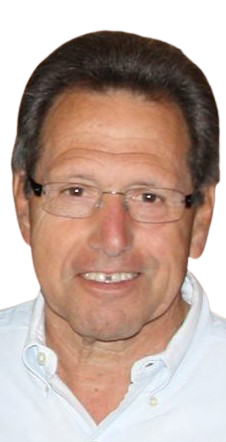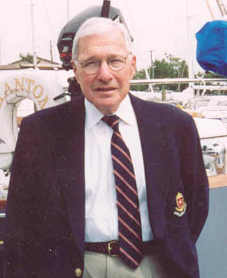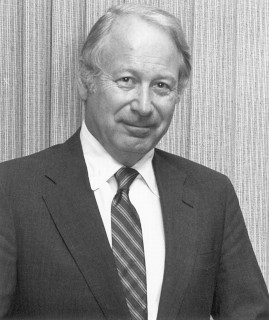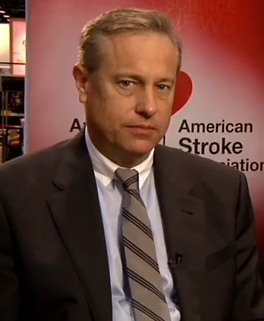Related Research Articles
Avijit Lahiri is a researcher in cardiology in the UK.
Alan W. Heldman is an American interventional cardiologist. Heldman graduated from Harvard College, University of Alabama School of Medicine, and completed residency and fellowship training at Johns Hopkins University School of Medicine. He held positions on the faculty of Johns Hopkins from 1995 to 2007. In 2007, he became clinical chief of cardiology at the University of Miami's Leonard M. Miller School of Medicine.

The Libin Cardiovascular Institute is an entity of Alberta Health Services and the University of Calgary. It connects all cardiovascular research, education and patient care in Southern Alberta, serving a population of about two million. Its more than 1,500 members include physicians, clinicians and other health professionals, researchers and trainees.

Mark E. Josephson (1943-2017) was an American cardiologist and writer, who was in the 1970s one of the American pioneers of the medical cardiology subspecialty of cardiac electrophysiology. His book titled Clinical Cardiac Electrophysiology: Techniques and Interpretations is widely acknowledged as the definitive treatment of the discipline. He served as Herman Dana Professor of Medicine at Harvard Medical School, director of the Harvard-Thorndike Electrophysiology Institute and Arrhythmia Service and the chief of cardiology at Harvard University's Beth Israel Deaconess Medical Center in Boston.

Valentín Fuster Carulla, 1st Marquess of Fuster is a Spanish cardiologist and aristocrat.

William Clifford Roberts was an American physician specializing in cardiac pathology.

K. Srinath Reddy is an Indian physician and the Former President of the Public Health Foundation of India and formerly headed the Department of Cardiology at All India Institute of Medical Sciences (AIIMS).

James S. Forrester III is an American cardiologist. Born in Philadelphia, Pennsylvania, he received his medical training at the University of Pennsylvania, UCLA, and Harvard University. During the 1970s through 1990s, his research led to three major advancements in the practice of cardiology. Later in his career, he would return to UCLA, this time as a professor, while simultaneously being the Chief of the Division of Cardiology at Cedars-Sinai Medical Center. Forrester has published hundreds of papers and manuscripts dealing with the subject of cardiology, and is the recipient of numerous awards, including being the second person to ever receive the Lifetime Achievement Award of the American College of Cardiology in 2009.

Nina Starr Braunwald was an American thoracic surgeon and medical researcher who was among the first women to perform open-heart surgery. She was also the first woman to be certified by the American Board of Thoracic Surgery, and the first to be elected to the American Association for Thoracic Surgery. In 1960, at the age of 32, she led the operative team at the U.S. National Institutes of Health (NIH) that implanted the first successful artificial mitral human heart valve replacement, which she had designed and fabricated.

Edmund Hiram Sonnenblick was an American medical researcher and cardiologist. His studies of the function of cardiac muscle cells during the 1960s shaped the basis of both cardiovascular physiology and the modern treatment of cardiovascular disease, making possible the development of ACE inhibitors. In 1962, he was also credited as the first person to image the heart muscle under scientifically-controlled conditions using the electron microscope. Though Sonnenblick's ideas about the relationship between the structure and function of the human heart today constitute medical-scientific commonsense, they were utterly novel at the time.

Ischemic cardiomyopathy is a type of cardiomyopathy caused by a narrowing of the coronary arteries which supply blood to the heart. Typically, patients with ischemic cardiomyopathy have a history of acute myocardial infarction, however, it may occur in patients with coronary artery disease, but without a past history of acute myocardial infarction. This cardiomyopathy is one of the leading causes of sudden cardiac death. The adjective ischemic means characteristic of, or accompanied by, ischemia — local anemia due to mechanical obstruction of the blood supply.
Joseph Stephen Alpert is an American cardiologist and professor of medicine at the University of Arizona Sarver Heart Center. He is also the editor-in-chief of the American Journal of Medicine.
Arthur Jay Moss was an American cardiologist.
Sekar Kathiresan is chief executive officer and co-founder of Verve Therapeutics. Verve is pioneering a new approach to the care of cardiovascular disease by developing single-course gene-editing therapies that safely and durably lower plasma LDL cholesterol in order to treat atherosclerotic cardiovascular disease.
Charles Kaye Friedberg (1905–1972) was an American cardiologist, known for his medical textbook Diseases of the Heart, which was a standard reference in cardiology during the 1950s and 1960s.
John Parsons Shillingford was a British physician and cardiologist, known as a pioneer of the introduction of coronary care units in the United Kingdom in the 1960s.

John A. Ambrose is an American physician who is an expert in coronary artery disease. He is one of the pioneers in acute coronary syndromes having published over 40 articles in the cardiology literature between 1985 and 2000 on their pathogenesis. He has also published on cigarette smoking and cardiovascular disease. Working with his PhD candidate, Rajat Barua, utilizing a novel in vitro model, they described the effects of cigarette smoking on nitric oxide biosynthesis, endothelial function, and endothelial-derived fibrinolytic and antithrombotic factors. Their 2004 update on cigarette smoking and cardiovascular disease published in the Journal of the American College of Cardiology has been referenced over 2,100 times as of 2020. Ambrose is a Professor of Clinical Medicine at the University of California, San Francisco. He was also a Director of the Cardiac Catheterization Laboratory at Mount Sinai Hospital and received a National Leadership Award from the National Republican Congressional Committee.

Richard Gorlin was an American cardiologist known for his contributions to the fields of valvular heart disease, coronary artery disease and cardiac catheterization, digitalis and vasodilators in congestive heart failure, and thrombolysis in myocardial infarctions. Along with his father, developed the Gorlin formula used to calculate valve areas in aortic valve stenosis and mitral valve stenosis.

Wael Fahed Al-Husami is a Jordanian cardiologist and interventional cardiologist, scientist and medical educator at Tufts University and a faculty member at Brown University’s Alpert Medical School, and a faculty Member at BIDMC Disaster Medicine Fellowship - Harvard Medical School. Wael Al-Husami is also a visiting professor of Medicine at the Royal College of Surgeons in Ireland.

Charles Michael Gibson is an American interventional cardiologist at Beth Israel Deaconess Medical Center, cardiovascular researcher, and professor at Harvard Medical School. He is best known for inventing the TIMI frame count and the TIMI myocardial perfusion grade, measures of coronary blood flow.
References
- ↑ Life and times of leading cardiologists, medscape.com. Accessed February 19, 2024.
- ↑ Interview, Clinical Chemistry
- 1 2 Braunwald, E (February 2001). "Nina Starr Braunwald: some reflections on the first woman heart surgeon". The Annals of Thoracic Surgery. 71 (2 Suppl): S6–7. doi:10.1016/s0003-4975(00)02397-3. PMID 11235772.
- ↑ Profile, Vanderbilt.edu. Accessed February 19, 2024.
- ↑ "The Mount Sinai Alumni". Archived from the original on October 28, 2008. Retrieved October 31, 2008.
- ↑ "ACC Distinguished Awards Program - American College of Cardiology". American College of Cardiology. Archived from the original on September 27, 2015. Retrieved July 8, 2015.
- ↑ https://kingfaisalprize.org/professor-eugene-braunwald King Faisal Prize: Professor Eugene Braunwald. Retrieved July 18, 2020.
- ↑ "Braunwald Libin/AHFMR Prize announcement". Canadian Journal of Cardiology. Archived from the original on May 26, 2011. Retrieved December 23, 2008.
- ↑ Wilson, Duff (January 3, 2010). "Harvard Teaching Hospitals Cap Outside Pay". The New York Times . Retrieved May 2, 2010.
- ↑ Degree honoris causa from the University of Salerno Retrieved October 26, 2013.
- ↑ Lee, Thomas H. (2013). Eugene Braunwald and the Rise of Modern Medicine. Cambridge, Massachusetts: Harvard University Press. ISBN 978-0-674-72497-6.
- ↑ "Dishonesty in Medical Research" (PDF). Archived from the original (PDF) on May 21, 2013.